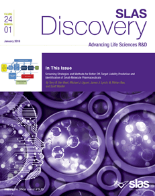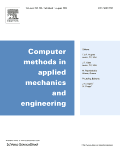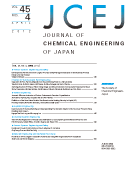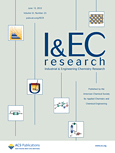
Digital Discovery
Scope & Guideline
Empowering Scientists through Digital Innovation
Introduction
Aims and Scopes
- Machine Learning and AI in Chemistry:
The journal showcases the application of machine learning and artificial intelligence techniques for various chemical problems, including property prediction, reaction optimization, and materials design. - Data-Driven Discovery:
A core focus is on the use of data-driven methodologies to extract insights from experimental and computational datasets, facilitating the discovery and design of new materials and compounds. - Automation and Robotics in Research:
Digital Discovery highlights advancements in automated systems and robotics for chemical synthesis, analysis, and characterization, aiming to streamline experimental workflows. - Integration of Computational and Experimental Methods:
The journal promotes research that integrates computational predictions with experimental validation, fostering a comprehensive approach to materials and chemical research. - Emerging Technologies in Materials Science:
Research on novel technologies such as quantum computing, advanced imaging techniques, and new synthesis methods is emphasized, showcasing their potential impact on materials science.
Trending and Emerging
- Hybrid Computational-Experimental Approaches:
There is a growing trend towards hybrid methodologies that combine computational predictions with experimental validation, reflecting a holistic approach to research challenges in materials science. - Advanced Machine Learning Techniques:
Emerging machine learning techniques, including deep learning and reinforcement learning, are increasingly being applied to complex chemical problems, indicating a shift towards more sophisticated modeling approaches. - Sustainable and Green Chemistry:
An increasing focus on sustainable practices and materials is evident, with research aimed at developing eco-friendly synthesis methods and materials that minimize environmental impact. - Automation and Self-Driving Laboratories:
The concept of self-driving laboratories and automated research platforms is gaining traction, highlighting the movement towards more efficient and high-throughput experimental methodologies. - AI-Driven Materials Discovery:
The application of AI in discovering new materials and optimizing existing ones is a rapidly growing area, with significant implications for energy storage, catalysis, and other applications.
Declining or Waning
- Traditional Synthetic Methods:
There has been a noticeable decrease in publications focused on traditional synthetic methods as the field shifts towards more automated and data-driven approaches. - Basic Theoretical Chemistry:
Theoretical explorations that do not integrate computational techniques with applied problems have seen a reduction, as the journal emphasizes practical applications over purely theoretical studies. - Non-AI-Based Predictive Models:
Research relying on conventional predictive models without machine learning or AI components is becoming less prominent, possibly due to the advantages offered by newer methodologies. - Static Data Analysis:
Papers focusing solely on static data analysis without dynamic, automated, or predictive elements are less frequent, indicating a shift towards more interactive and adaptive research methodologies.
Similar Journals

SLAS Discovery
Highlighting Pioneering Research for a Healthier TomorrowSLAS Discovery is a leading academic journal published by Elsevier Science Inc. that serves as a pivotal resource in the fields of Analytical Chemistry, Biochemistry, Biotechnology, and Molecular Medicine. Since its inception in 2017, the journal has become increasingly influential, attaining a Q1 ranking in Analytical Chemistry and notable Q2 rankings in the associated fields as of 2023. With an impressive Scopus rank that places it within the top percentile of its categories, SLAS Discovery highlights groundbreaking research and methodologies impacting drug discovery and development. The journal advocates for open access, ensuring that its curated content is widely available to the scientific community, fostering collaboration and innovation. Researchers, professionals, and students alike will find value in the journal's comprehensive reviews and original research articles that contribute to the advancement of scientific knowledge and applications in life sciences.

COMPUTER METHODS IN APPLIED MECHANICS AND ENGINEERING
Unveiling New Dimensions in Engineering through Computation.COMPUTER METHODS IN APPLIED MECHANICS AND ENGINEERING, published by Elsevier Science SA, is a premier journal that has significantly contributed to the fields of computational mechanics, computer science applications, mechanical engineering, and the mechanics of materials since its inception in 1972. With an ISSN of 0045-7825 and an E-ISSN of 1879-2138, this journal is recognized for its rigorous peer-review process and is consistently ranked in the Q1 quartile across multiple categories, including Computational Mechanics and Mechanical Engineering. Its impressive Scopus rankings place it in the top tiers of its field, with a percentile ranking of 98th in Computational Mechanics. Researchers, professionals, and students will find the journal's comprehensive scope and high-quality articles invaluable for advancing their knowledge and practices at the intersection of engineering and computation. Although not an open-access journal, its impactful contributions to both theoretical and applied research make it an essential resource for anyone involved in these dynamic fields.

JOURNAL OF CHEMICAL RESEARCH
Exploring the Frontiers of Chemical Science.JOURNAL OF CHEMICAL RESEARCH, published by SAGE PUBLICATIONS LTD, serves as a pivotal platform for scholars and practitioners in the field of Chemistry. With its ISSN 1747-5198 and E-ISSN 2047-6507, this journal has established itself as a reliable source of innovative research since its inception in 2000. The journal's comprehensive scope encompasses various facets of chemical research, providing a broad spectrum of articles that foster scientific advancement and technological innovation. Ranked in the Q3 tier of miscellaneous chemistry journals in 2023, with a Scopus rank of #246 out of 408, it represents a solid outlet for emerging and established researchers alike. Although currently not an open-access journal, its rigorous peer-review process ensures that only high-quality studies are published, catering to the academic and professional community's demand for credible and impactful findings. Positioned in the vibrant research landscape of the United Kingdom, the JOURNAL OF CHEMICAL RESEARCH is dedicated to expanding the frontiers of chemical sciences and is an essential resource for anyone committed to advancing this dynamic field.

JOURNAL OF CHEMICAL ENGINEERING OF JAPAN
Fostering Collaboration for Global Scientific ProgressJOURNAL OF CHEMICAL ENGINEERING OF JAPAN is a distinguished academic publication in the field of chemical engineering and chemistry, published by Taylor & Francis Ltd. With its ISSN 0021-9592 and E-ISSN 1881-1299, this journal has been a vital resource for researchers and practitioners since its inception in 1968 and continues to provide essential insights and advancements through 2024. The journal operates under an Open Access model as of 2023, promoting wider dissemination of research findings and encouraging collaboration within the global scientific community. Currently categorized in the Q4 quartile for both Chemical Engineering and Chemistry (miscellaneous) in 2023, it ranks within the lower percentiles of its respective fields, offering a platform for emerging scholars to publish their work and gain visibility. As part of Japan's academic landscape, it addresses numerous aspects of chemical engineering, fostering innovation and technical development that contribute to the industry's growth. Engaging with this journal is paramount for those looking to stay informed on the latest research trends and applications in chemical processes.

npj Computational Materials
Bridging Theory and Application in Materials Research.npj Computational Materials is a premier open-access journal published by the esteemed NATURE PORTFOLIO since its inception in 2015, dedicated to advancing the interdisciplinary fields of computational materials science and engineering. With an impressively robust impact, the journal has achieved Q1 rankings across multiple disciplines, including Computer Science Applications, Materials Science, and Mechanics of Materials, making it a leading platform for disseminating innovative research. Researchers and professionals benefit from its high visibility and accessibility, given the open-access format that allows for a global reach. The journal continues to foster the development of computational methods and simulations that drive forward the design and deployment of advanced materials, positioning itself as an essential resource for academics and practitioners alike. By bridging the gap between theoretical models and practical applications, npj Computational Materials plays a crucial role in shaping the future of materials research.

Green Chemical Engineering
Fostering collaboration in sustainable chemical innovation.Green Chemical Engineering, an esteemed journal published by KEAI PUBLISHING LTD, plays a pivotal role in advancing the field of sustainable chemical engineering. With an Open Access policy since 2020, this journal facilitates the free exchange of cutting-edge research and innovations that address critical environmental challenges. Based in China, it has rapidly gained recognition with impressive category quartiles, ranking Q1 in numerous relevant fields including Catalysis, Chemical Engineering (miscellaneous), Filtration and Separation, and Process Chemistry and Technology. Its presence in Scopus highlights its significance, with top rankings (e.g., Rank #4/19 in Filtration and Separation) placing it in the upper echelons of chemical engineering literature. Designed for researchers, professionals, and students alike, Green Chemical Engineering aims to foster a collaborative platform for the dissemination of pioneering work that contributes to a greener and more sustainable future.

Nature Synthesis
Exploring Novel Pathways in ChemistryNature Synthesis, published by SpringerNature, is a premier peer-reviewed journal dedicated to advancing the field of synthesis in chemistry and materials science. With an impressive impact factor and categorized in the Q1 quartile for Chemistry (miscellaneous), Inorganic Chemistry, Materials Chemistry, and Organic Chemistry, it ranks prominently among its peers, reflecting its high-quality research output and relevance.
This journal provides a platform for researchers, professionals, and students to publish innovative synthesis methodologies, novel materials, and interdisciplinary approaches that push the boundaries of chemistry. Operating under an Open Access model, it ensures that research is widely accessible, fostering collaboration and engagement across the global scientific community.
Situated in the United Kingdom, Nature Synthesis is committed to contributing to the scientific discourse from 2022 to 2024, and beyond, as it continues to highlight significant advancements across chemistry domains.

SmartMat
Unlocking the Potential of Smart Materials for Global Impact.SmartMat is a cutting-edge, peer-reviewed academic journal published by WILEY, dedicated to the fields of Chemistry, Materials Science, and Mechanics of Materials. Launched in 2020, this Open Access journal aims to disseminate high-quality research and innovative findings that bridge these interdisciplinary areas. With an impressive impact factor reflecting its strong scholarly influence, SmartMat currently holds the prestigious Q1 category ranking in key domains such as Chemistry (miscellaneous), Materials Science (miscellaneous), and Mechanics of Materials, underscoring its relevance and importance in advancing material research. The journal is ranked among the top in its fields on Scopus, with 98th and 97th percentiles for Engineering and Chemistry rankings, respectively. Researchers, professionals, and students looking for a platform to share advancements in smart materials and their applications are encouraged to explore the wide-ranging access options available, enhancing visibility and engagement with global scientific communities.

INDUSTRIAL & ENGINEERING CHEMISTRY RESEARCH
Elevating Industrial Chemistry to New HeightsINDUSTRIAL & ENGINEERING CHEMISTRY RESEARCH, published by the American Chemical Society, is a pivotal journal that disseminates high-quality research in the fields of Chemical Engineering, Chemistry, and Industrial and Manufacturing Engineering. With an impressive impact factor, this journal ranks in the top quartile (Q1) across multiple categories, reflecting its significance and influence within the scientific community. Since its inception in 1987, IECR has provided a platform for researchers, professionals, and students to publish innovative findings that advance the understanding and application of engineering chemistry. Though it operates under a subscription model, the journal continues to foster collaboration within the field, inviting contributions that span theoretical advancements, experimental studies, and practical applications. Whether you are engaged in academia or industry, IECR serves as a vital resource for staying abreast of the latest developments in chemical and engineering research.

Journal of Computational Design and Engineering
Bridging Theory and Practice in Computational EngineeringThe Journal of Computational Design and Engineering, published by Oxford University Press, is a premier open-access journal dedicated to advancing the field of computational science, technology, and engineering. With an E-ISSN of 2288-5048 and having transitioned to open access in 2015, this journal fosters a wide-reaching dissemination of high-quality research and innovative methodologies pertinent to computational mathematics, mechanics, modeling, and simulation. Notably recognized within the academic community, the journal boasts impressive rankings, including Q1 in Computational Mechanics and Computer Graphics, underscoring its significance in these fields. With a broad scope that appeals to researchers, professionals, and students alike, the Journal of Computational Design and Engineering plays a vital role in stimulating discussions on the intersection of computation and design, providing a platform for the latest advancements that shape engineering practices globally. As we look forward to its continued publication until 2024, the journal stands as a crucial resource for those aiming to push the boundaries of knowledge in computational engineering disciplines.